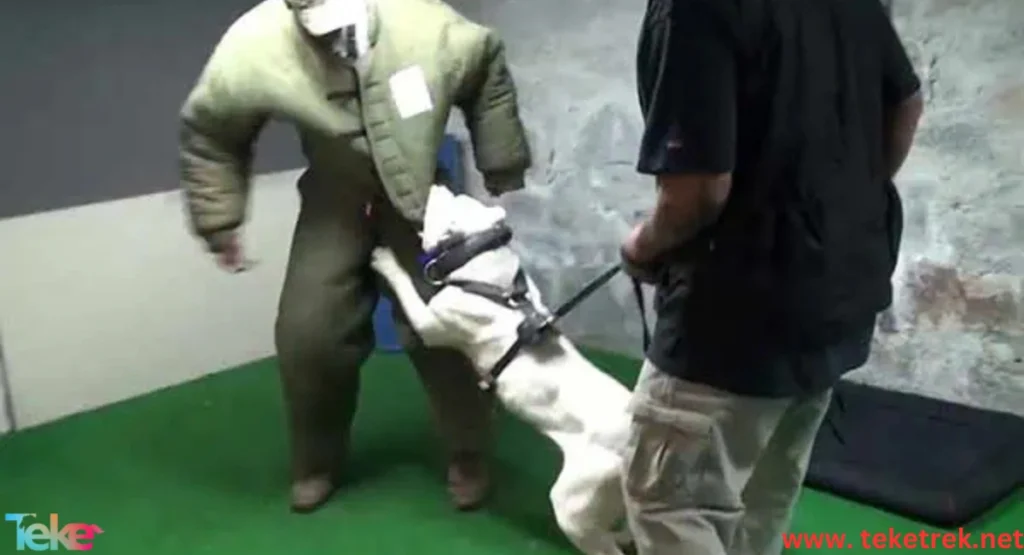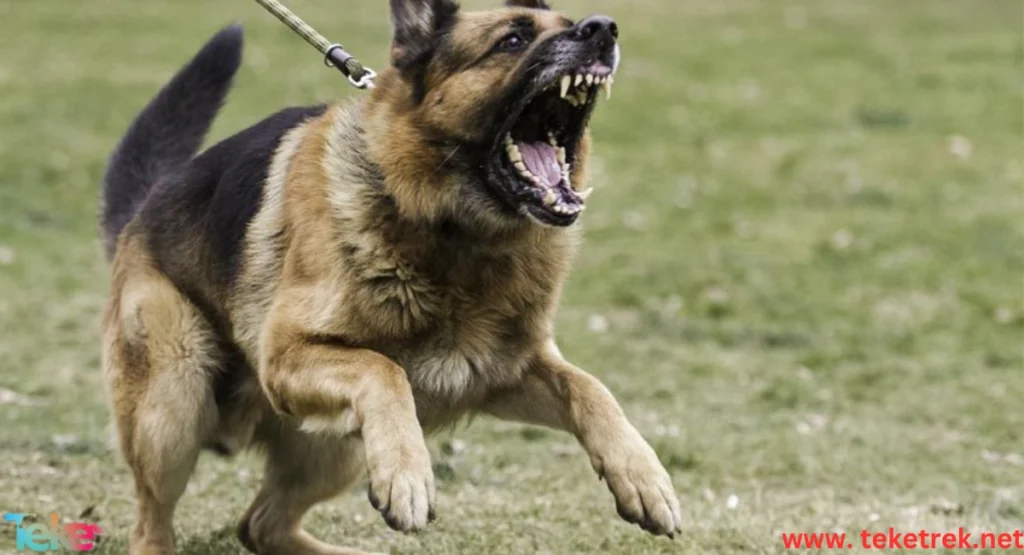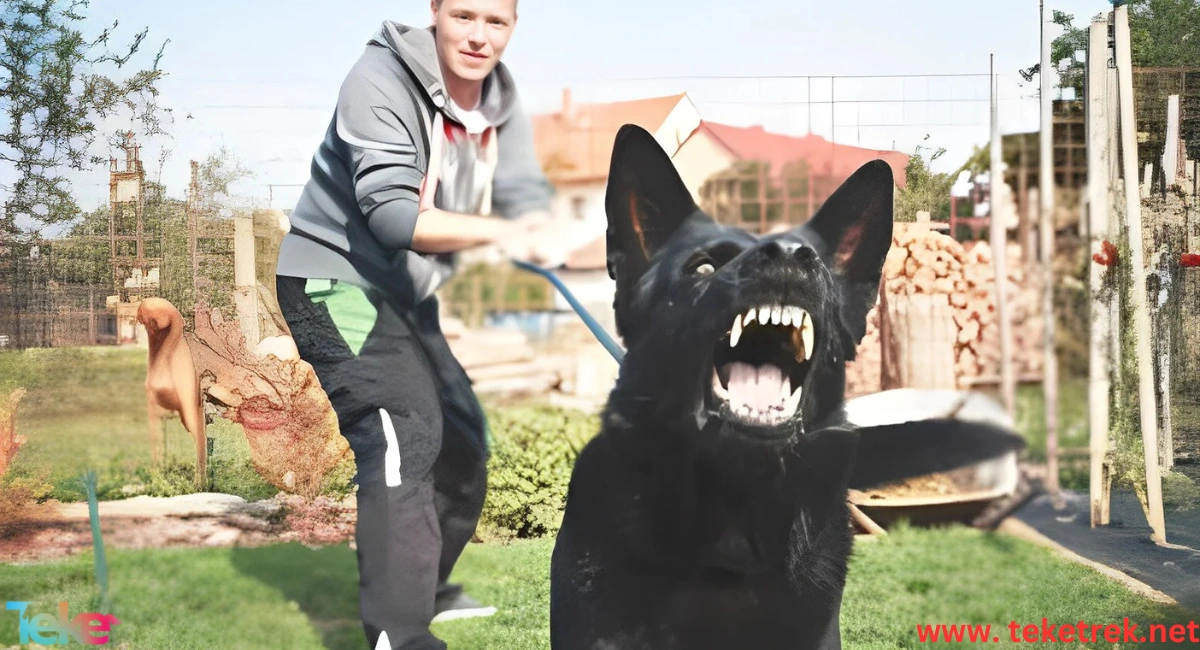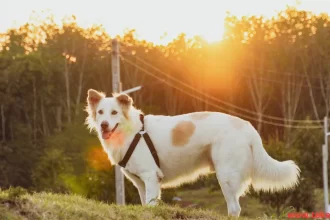Aggressive behavior in dogs is a significant challenge faced by many dog owners, ranging from growling and barking to biting and lunging, causing concern and danger to you and others. Often, aggression is not merely a “mean temperament” but a symptom of a deeper issue such as fear, anxiety, or frustration, and sometimes it may stem from pain or an underlying medical condition. Effective management of these behaviors requires a thorough understanding of their roots, using carefully planned strategies to ensure everyone’s safety, and restoring trust between the owner and their dog, rather than resorting to punitive methods that could worsen the problem. Here are the details in this article from Tiki Trik.
Causes of Aggressive Behavior in Dogs and How to Recognize Them
Aggressive behavior in dogs arises from underlying causes such as fear, anxiety, pain, lack of social interaction, resource guarding, or territorial instincts—not from malice. Recognizing early warning signs like lip curling, avoidance, stiffness, and growling is crucial to de-escalate situations and prevent bites. Addressing the root cause through proper veterinary care, professional behavior modification, and avoiding punishment is essential for managing and improving a dog’s behavior.

What Are the Main Signs of Aggression in Dogs?
Key signs of aggression include growling and baring teeth, raised hackles, threatening barking, stiff or wobbly stance, changes in ear and tail position, tense staring, and lunging or actual attacks. Paying attention to these signs helps avoid dangerous situations. Prominent Body Language Signs:
- Growling and baring teeth: Often occurs when someone approaches, serving as a direct warning.
- Raised hackles: A clear indication of readiness to attack.
- Threatening bark: A low, harsh bark that serves as a warning.
- Stiff or wobbly stance: Shows tension and readiness to attack.
- Changes in ear and tail position: Ears may pull back or stand upright, and the tail may be raised and wagged, signaling aggression.
- Staring: Direct, fixed eye contact with partially closed mouth indicates tension or threat.
- Lunging or attacking: The dog may lunge toward a person or animal without contact or proceed to an actual attack.
How Can I Recognize Signs of My Dog’s Anger?
To identify behaviors indicating your dog’s anger or aggression, look for signs like body stiffness, growling, showing teeth, ears pulled back, and a stiff or tucked tail. The dog may also avoid eye contact, lick its lips, yawn, or try to move away to signal discomfort. In more severe cases, behaviors may include lunging, biting, or even attacking. Body Language:
- Stiff body: An angry or stressed dog may freeze or become very still, with a rigid posture.
- Flattened ears: Ears pulled back can indicate fear, discomfort, or sometimes aggression.
- Tucked tail: A tightly tucked tail usually signals fear or anxiety, and can occasionally accompany anger.
- Staring: Strong, direct eye contact can indicate a challenge or threat.
- Avoiding eye contact: The dog may turn its head or look away to signal withdrawal or avoidance.
Sounds:
- Growling: A low growl warns others to leave the dog alone.
- Snarling: Teeth-baring accompanied by a growl is a direct aggressive signal.
Other Signals:
- Lip licking/yawning: Stress signals indicating discomfort or fatigue from a situation.
- Panting: Excessive panting, especially when it’s not hot or after exercise, may signal stress or anxiety.
Best Ways to Sell Pet Food Online & Top Tips for Choosing the Right Food
Behavioral Training for Aggressive Dogs: Effective Strategies
Behavioral training focuses on managing triggers and changing the dog’s emotional response through positive reinforcement and gradual exposure, often requiring professional guidance to design a personalized plan involving desensitization and counter-conditioning. This process demands patience, consistency, and a safe environment to prevent aggressive behaviors while teaching the dog calm, new responses to triggers. Despite its challenges, training is effective and can improve the dog’s behavior, allowing safe coexistence with people and other animals.
What Are the Best Ways to Train an Aggressive Dog?
The best approach is to work with a qualified behavior specialist who uses positive reinforcement (rewards and praise) to address aggression and build trust. It’s important to identify the root cause of aggression and provide a safe environment, exercising patience and persistence throughout training. Key Steps to Train an Aggressive Dog:
- Consult a qualified specialist: Aggression is a complex behavioral issue requiring professional expertise to ensure everyone’s safety. The specialist will assess the situation, identify the cause, and develop an appropriate training plan.
- Use positive reinforcement: Reward calm or obedient behaviors using toys, treats, and praise to encourage repetition of desired behaviors and reduce aggression.
- Provide a safe space: Dogs that feel insecure or lack control may become aggressive. Providing a comfortable, secure area can help the dog feel safe during stressful moments.
- Build trust and communication: Trainers aim to develop a strong, trust-based relationship between the dog and owner. Effective communication and educating the owner on understanding their dog’s behavior strengthens this bond.
- Patience and persistence: Training an aggressive dog takes significant time and effort. Early intervention makes change easier, but consistent, ongoing training is essential.
Why Does My Cat Lick My Face? Understanding Your Cat’s Behavior
Can I Train My Dog Myself to Reduce Aggression?
Generally, you should not try to manage your dog’s aggression alone; consult a certified dog behaviorist or veterinary behaviorist for guidance. Aggression requires a specialized approach to address root causes, and handling it alone can be dangerous. While you can help by managing your dog’s environment to avoid triggers and focusing on basic obedience, only professionals can safely and effectively implement a behavior modification plan.
Why Is Professional Help Necessary?
- Safety: Aggression can escalate to bites or attacks; specialists ensure the safety of you, your dog, and others.
- Complexity: Aggression is a serious behavioral issue, not merely a training problem, requiring understanding of underlying causes.
- Effectiveness: Professionals can develop a customized plan that uses positive reinforcement to change your dog’s behavior, which is more effective than punishment, which can backfire.

Safe Handling of an Aggressive Dog Inside and Outside the Home
To safely handle an aggressive dog, whether inside or outside the home, prioritize safety by staying calm, avoiding direct eye contact, and backing away slowly. It is crucial to provide a safe environment for the dog, such as using a muzzle or crate, and rely on positive reinforcement training while consulting specialists to effectively and properly address aggressive behavior. Avoid using violence or physical punishment.
How Can I Safely Handle My Aggressive Dog at Home?
To safely manage an aggressive dog at home, prioritize immediate safety by maintaining distance and barriers, and never punish the dog. Identify triggers, provide a safe space, and organize the dog’s environment. Most importantly, seek professional guidance from a certified dog behavior consultant or veterinarian to address aggression. Avoid situations that provoke aggression and use positive reinforcement for desired behaviors. For immediate safety and management, follow these steps:
- Create Physical Barriers: Use gates, doors, walls, or even a car to place a barrier between yourself, others, and your dog.
- Provide a Safe Space: Give your dog a comfortable, secure area where they can retreat and feel safe, away from potential triggers.
- Use a Muzzle: If your dog shows aggressive signs, it may be time to use a muzzle and consult a professional trainer.
- Avoid Punishment: Never punish aggressive behavior, as it can increase arousal and provoke even more aggressive reactions, including directed aggression toward you.
Do I Need Special Equipment to Handle an Aggressive Dog Outside the Home?
Yes, special equipment and professional guidance are necessary when handling an aggressive dog, as standard equipment may be ineffective or increase risks to you and the dog. Recommended equipment includes a secure basket muzzle, head halter or harness, and a strong leash. Additionally, high-value treats for training, a deterrent spray, and a sturdy walking stick can be useful—but only use equipment you know how to handle. Key essential equipment includes:
- Muzzle: A basket muzzle is essential for safety, allowing the dog to pant and drink while preventing biting.
- Head Halter: Tools like the Gentle Leader or Halti head halter offer better control than a standard collar.
- Strong Leash and Harness: Ensure your equipment is durable enough to control a strong, aggressive dog.
- Sturdy Walking Stick: Can be used as a physical deterrent to keep the dog away from you or your dog.
Conclusion
Managing aggressive dog behavior requires a proactive, safety-focused approach, including identifying triggers, ensuring a secure environment, and seeking professional guidance from trainers or veterinary behaviorists. Early intervention is essential, as aggression may indicate underlying fear, territorial tendencies, or health issues that require comprehensive evaluation.





